When I found out my brother had decided to do a destination wedding, I was jazzed: a joyous excuse for a trip to Europe! I wanted to travel to Rome, Italy in my wheelchair. One of the great things about Europe is that the continent is compact: once you’re there, it’s easy to sample numerous different cultures with minimal travel. The biggest challenge is choosing where to go and ensuring that you have enough time to devote to some of Europe’s treasures. For those of us who wheel, reliable and detailed information about a foreign locale can be inconsistent. While Europe does have accessibility laws, implementation of the laws doesn’t seem uniform between countries. Some do better than others.
Knowing that Switzerland would give us a taste of modern (and expensive) Europe, my partner Will and I considered options that would provide exposure to ancient history (especially great for his 9-year-old son who was making the trip with us). We considered Prague and Istanbul, but based on expense, language, and even travel advisories, eventually chose Rome.
I traveled to Italy in high school, but only to Venice and Florence. Although I initially lamented that I wouldn’t get a new exotic stamp on my passport, Rome proved to be a completely unique experience: a vibrant cornucopia of histories, spiritualism, art, cultures, and food, all supported by a solid base of warmth and heart of the Roman people.
Pre-Planning
First, a quick note about where I’m coming from: I am a T-4 complete SCI, 14 years out from injury. I currently live in Montana, but have lived in Denver, San Diego, and Los Angeles, and traveled extensively domestically and internationally, including Dubai, Japan, and Brazil. I’m independent in self-care and am typically adventurous and flexible when it comes to obstacles that arise during travel. I wheel myself, but I also don’t mind being pushed up hills or hoisted up a few steps if it’s the only option. For this trip, I was looking for something more adventurous than an all-inclusive resort, but not quite to the extent of a bathroom-less burro trek through the desert. (Save that for the future.)
My initial research on wheelchair-friendly Rome yielded several common threads. One, lots of comments about the cobblestones. Two, quite a few wheelchair-related resources (I.e. Rentable taxis, hotels with access, etc), but I was flabbergasted at the price tag that accompanied many of them. I am a “starving artist” actor and my partner is a high school teacher, so we were looking for something more affordable. Three, many resources urged travelers to get tickets ahead-of-time for several attractions, like the Vatican museums. I’ll address all of these throughout this article.
The biggest pre-planning elements to consider: one, will you have a traveling companion who is capable of assisting? Having someone who can help push, lift, pop up stairs, etc. opens up options…you can “wing it,” as we often did. Two, don’t cut yourself short on time – we had six days in Rome, and it was just enough to see the basics. The city is a treasure trove, so don’t rush it. Three, consider the time of year. Rome gets hot…we went early June, and lucked out with a few cool days. But we also had a couple of scorchers, so be mindful of weather considerations. Four, if you don’t know Italian, learn some! While many Romans speak English, knowing Italian goes a long way in breaking the ice when you need assistance. (Knowing “please”, “thank you,” “Where?,” and “do you speak English?” are helpful. A wheelchair is “sedia rotelle”). I speak a bit of Spanish, which helped since the languages are similar. But learn some Italian! It’s a beautiful, fun, and very clear language and learning is good form. When in Rome…
Getting There
In Europe, the airports are “on it” with wheelchair travelers. Aside from occasionally having to wait for aisle chair delivery, many airports (including Frankfurt, Geneva, and Rome’s Fiumicino) have access assistants who will personally guide you everywhere you need to go.
One pleasant surprise was discovering that on Easy Jet (which we flew from Geneva to Rome), my wheelchair was just narrow enough to fit down the aisle. Yay! I always love minimizing aisle chair transfers. Apparently Easy Jet is the only airline with a wider aisle.
A note on the flight over: we flew from Montana to Geneva, and although I had previously traveled internationally, jet lag hit me with a fury. Know that fatigue might limit you during the first couple of days. Plan enough time to sleep a couple of nights before your trip. Also, if you have bowel program needs, plan accordingly. I used the bathroom the morning we departed so that I would be okay for a couple of days, in case any travel plans went awry.
For the transcontinental flight, we saved on cost by flying in coach and having multiple stops. Depending on your needs, you may want to spend more for a direct flight or business/first class. We traveled for 30 hours on our return, which can be hard on a body that can’t stand up and walk around. I wear compression socks and frequently fidget and weight-shift on the plane. But I find that long flights still leave my body more swollen and spastic.
Upon arriving in Rome, be cautious of taxi options. White taxis are “Comune Di Roma” cityoperated, with a 48Euro flat rate from the airport to the city center. Black taxis are private and can charge more. We did not take wheelchair accessible taxi services, we took regular taxis and loaded my chair into the back (sometimes popping off the wheels), and found the cabbies to be willing and helpful.
Accommodation
One of my biggest triumphs with Rome was our accommodation. I was seeking a central location so we could wheel to attractions and cut down on transit costs. Initially, I was dismayed by expensive hotels (around 250-400 Euros per night!), and considered an Air BnB about 20 minutes outside the city. But it was unclear how accessible it would truly be.
I happened to stumble across a review for Monastery Stays. I wasn’t really familiar with the idea of staying at a monastery. Most of them are operated by orders of nuns from all over the world and host traveling pilgrims or general tourists who are visiting Rome. It turned out to be an amazing find!
We stayed at the Casa Santa Sofia in the Monti district just about 4 blocks from the Colosseum and located right on a piazza that was hopping with tourists and locals 7 nights a week. Inside it was quiet and comfy. The amenities were Spartan: basic twin beds, towel service only every couple of days, very basic breakfast, no fancy decoration frills. But if you’re okay with a crucifix or Virgin Mary on the wall, the sounds of nuns and priests singing in the chapel, and just the basics, it’s perfect. We even had an air conditioner in our room! And while they initially said they couldn’t accommodate all three of us in the accessible room, they moved a bed in, which cut down our cost to 460 Euros for the entire stay – less than 100 Euros per night!
Best of all, it was completely accessible. The only challenge was that the accessible entrance was separate from the main entrance – they gave us our own key, and my partner would have to enter and unlock the door from the inside each time. Once inside, an elevator took us to our 2nd floor room. The room was spacious enough, and the bathroom was complete with a roll-in shower and a couple of grab bars. I use a NuProdx travel bathroom chair, which fit easily over the toilet. Again, not fancy, but SO much better than many “accessible” places I’ve stayed, even in America. And, it definitely felt more spacious than other European accommodations that are often tight.
If you go for a Monastery, just be sure to do your research. Some have curfews, and some are more conveniently located than others. Googling a street-view image can be really helpful to evaluate their definition of “accessible.”
Wheeling and Getting Around
I was surprised at how wheel-able I found Rome to be IF you’re adventurous. It’s not easy, but definitely possible. My Freewheel was invaluable. The cobblestones in Rome vary by the block, from smooth-ish to gigantic. Most of the time I could push myself, but would occasionally have Will assist for stability. With normal casters, the tiniest unexpected bump could be treacherous. Before leaving, I anticipated that I would often take the Freewheel off and have Will carry it, but I ended up leaving it on most of the time, except when we were indoors. You CERTAINLY need to bring a set of basic tools for tightening and adjusting your chair – I didn’t have to tighten much, but the stones can bounce you around like a rag doll, so make sure your chair is in good working order.
Also, be ready to roll in the street. Often it’s just easier than constantly bumping up and down the “curb cuts” (which are really more like small curbs), or navigating tight, tourist-filled sidewalks. The tiny cars and Vespas move fast but are mostly good about watching for pedestrians. Just keep your wits about you.
Note: using a power chair is possible. I actually ran into a woman from Cleveland who had rented a power chair from a Roman pharmacy for about 30 Euros/day. Just make sure you keep your chair charged for rolling around the city.
Buses do have accessibility. We bought a one-day pass for one of the “Hop On, Hop Off” Buses (about 18 Euros for adults, but free for wheelers). We ended up only using it once, which wasn’t really worth it. However, they prioritize the loading of wheelers. So, if you want to just ride and take in the city, it’s a good option. The train also has certain lines that are supposedly accessible, but we didn’t use them.
In general, rolling around the city is fun and adventurous, but it takes time. If you want to visit more attractions, I’d recommend planning for transportation. Rolling through the Roman streets can lead you to the little delightful niches of the city. However, a good map is a must. The streets are tiny, and more than once we accidentally veered off course and didn’t realize it. Even the maps can be deceiving: something will look like a road, and turn out to be a big pathway with a staircase. Since Rome is a city comprised of several big hills, we often found ourselves on a route that took us up or down a SUBSTANTIAL hill. Luckily, Will is a fit mountain hiker and was able to assist with a push. Just know that wheeling the city can be an adventure in itself, and take more time and effort than you might anticipate. But, if you’re up for it, it’s delightful. Note: on our final day, I was a little tired of pushing, so we took a taxi to the top of the Villa Borghese, the city’s biggest park, and then rolled back down. It was only a 10 Euro cab ride and totally worth the splurge. Getting around without rolling is doable, just more costly.
Attractions
Travel books often recommend getting advance tickets for many of the Roman attractions. Will and I weren’t sure how wheelers factored into this, so we decided not to purchase in advance and “wing it” once we arrived.
Luckily, we discovered that as a wheeler with one or two companions, you are well cared for. (Will and I decided that the challenges of navigating an ancient city MORE than makeup for the benefits enjoyed as a wheeler). For most attractions, wheelers get in free, and a companion is free or discounted. Always be sure to ask.
Most of the big Roman sites are very accessible, and we found a lot of folks who were helpful in getting to the right place. Still, if you ask for directions or assistance, it’s important to ASK TWICE, to make sure they understand that you need wheelchair accessible routes. A couple of times we were directed to a certain route, but afterward realized that they didn’t fully understand what we were asking. Some sites are better than others at directing you to the right place (more info below).
Mostly BE ASSERTIVE – don’t be afraid to ask frequently and make sure you’re on the right track.
As for tours, we were occasionally told that tours were not accessible. Audio guides are a good option. See below for specific attractions where tours seem valuable.
One more note on bathrooms: I have a mitrofanoff, so I can basically pee in a bottle wherever and whenever I need to. I found this to be particularly helpful in Rome, as accessible bathrooms are difficult to find outside of the big attractions. Restaurants rarely have accessible bathrooms, or they are too crowded to access. Each day I loaded up on catheters and then would sneak off to an inconspicuous spot to pee in a bush (Rome has lots of bushes and trees!). If an accessible bathroom is a priority for you, your best bets are museums or big public attractions.
Note: be VERY aware of scammers on the street trying to sell you tickets, particularly around sites like the Vatican. They sometimes look very official and will act as though they have insider knowledge about wheelchair privileges. But seek out the official folks at the site entrances.
Specific Attractions
- COLOSSEUM – A treasure of Ancient Rome. Free to wheelers! Many people outside directed us to the accessible entrance, and the staff were very helpful. Once in, it’s very easy to maneuver. The crowds are the biggest barrier. But it’s fun to be amidst so many travelers from different places. We did not arrange a tour, but if we went again, we’d likely pre-arrange one of the tours that covers the Colosseum, Forum, and Palatine Hill. It seemed worth it (my brother had arranged a tour through American Express when he went, and said it was great.) If you do a tour, make sure the tour guide knows the accessible routes. No advance ticket is required.
- PALATINE HILL – Another treasure, highlighted by the modern art installations that pepper the ruins. Outdoors, and challenging on wheels…be ready for uneven terrain (cobblestones, grass, gravel). But, doable and worth it. A great spot for kids to run around. No advance ticket is required.
- ROMAN FORUM – Filled with awesome ruins, but few trees, and can be HOT. Be sure to enter at the entrance nearest to the Colosseum…going up Palatine Hill only allows you to overlook the Forum. You must come back down and reenter the Forum entrance. The Forum was the most challenging terrain in all of Rome – HUGE ancient stones. Worth it if you have assistance and water. Also, wheeling along Via die Fori Imperiali allows you to look down at the Forum, and there’s an elevator from that entrance/exit. No advance ticket is required.
- ST. PETER’S BASILICA – A must-see, and easy to navigate in a chair. Crowded, but wheelers go in a slightly alternate route – be sure to ask. The staff were very helpful and knowledgeable. No advance ticket is required.
- VATICAN MUSEUM – Another must-see. Don’t wait in the lines stretching down the sidewalk – there is a specific wheelchair line at the very front entrance. One inside, buy your ticket on the first floor (where all the tour groups wait), then take the elevator up to the second floor. Once inside, there’s so much to see, but the Sistine Chapel is a must. You have to go against the grain of the crowds to get there, but once inside, the guards help wheelers to get to the very front. An audio guide is very helpful, and you can plug in headphones and keep your hands free. As for the rest of the Museums, we also braved the throngs to get to the Raphael halls, which were less satisfying (maybe we were hungry and tired of crowds). Note, an advance ticket for the Vatican Museums is not required for wheelers and a companion. But, if you are traveling with more than 2 people, get an advance ticket for the other travelers so they don’t have to wait in 3hour lines outside.
- CAPITOLINE MUSEUMS – This was the most challenging to navigate of all the sites. While the Museum itself is certainly set up to accommodate wheelchairs, very few of the staff knew the protocol. First, there are 2 routes to get up to the entrance, both big hills. If you don’t have a power chair or someone to push, I recommend taking a taxi all the way up to the entrance building. Once at the entrance plaza, 4 different guards had to assist us before we found the way in, which was a nondescript side door. Once inside, it’s very accessible (and cool!), you just have to ask a couple of times to find the right person who knows the way. The artwork – including a statue of Marcus Aurelius – is definitely worth it. No advance ticket is required.
- PANTHEON – We happened across this rolling through the city one night. An impressive monument, very accessible, and right next to a popular plaza.
- TREVI FOUNTAIN – A very popular tourist spot, particularly at night. Fun to visit, but we got stuck pushing up a huge nearby hill to the Presidential Palace…twice. A good spot to hit with a Hop On, Hop Off bus.
- VILLA BORGHESE – Because we waited to hear back about accessibility, we were too late for tickets. All visitors need advance tickets, including wheelers. Make sure you order tickets at least a couple of days in advance. We still visited the park and gardens around the Villa, which are free (no ticket required), reminiscent of Central Park. The main area near the horse grounds is level and easy to roll, great for picnicking, or you can visit one of the lunch spots overlooking the city (although, they’re pricey and not the best food experience). To get up to the main pond, it’s a bit hilly. The pond’s boat rentals are not accessible. The park was one place we really noticed the impact of Italy’s current financial situation. It was sadly very overgrown and unkempt. With more care, it’s easy to see how it would have been the place to be in years past. It ended up being our least favorite outing.
Restaurants
One of the best things about Rome is…great food is everywhere! And, the abundance of al fresco dining – outdoor patios abound, so you can easily choose a spot and roll up for a great meal or drink. In general, Roman breakfasts are small – usually espresso and a croissant. Some places do have more complete “American’ breakfasts. For lunch, many spots have pizza and drink specials. We tended to splurge on dinner, getting full meals with wine, which usually cost 60-80 Euros.
We ended up loving the area where we stayed in Monti, a hip area filled with restaurants, coffee shops, and stores. Our first night, our monastery host recommended Il Tettarello. A popular pizza place, it’s also a cozy trattoria where we drank crisp wine and feasted on tender beef with mushrooms and our new favorite dish of tomato sauce and morsels of pork cheek, rigatoni Amatriciana. The inside wasn’t accessible, but the staff were happy to bump me up a couple of stairs to get in, and outdoor seating was available.
Just down the street we discovered Fatamorgana, where we enjoyed unique flavors of creamy gelato every single night. One of the best in Rome, it was a popular spot for locals and tourists, with a cute little piazza out in front. One step to get in, but you could easily order from outside.
For lunch one day, Will wanted a break from Italian, so we tried Hasekura. Outside of Japan, it is the freshest, most authentic, and tasty Japanese food I’ve had. Even as a non-seafood person, I tried the octopus cucumber salad and clam-filled miso, as it was fresh and flavorful, rounded out by tofu appetizer and a pork and egg rice bowl.
There are a myriad of delightful piazzas all over Rome, where you can find multitudes of restaurants right next to fountains where people hang out for social time. Our favorites were the Spanish Steps, Trastavere, and Campo de Fiori.
In the swanky neighborhood around the Spanish Steps, we found Otello Della Concordia, which served up fresh clam pasta, tasty bruschetta, and rigatoni alla grecchia in a friendly, artistic atmosphere that was wheelchair accessible and apparently one of the oldest restaurant spots in Rome.
Across the river, Trastavere was highly recommended as a hip and active area. It reminded me of New York’s SoHo – a little bohemian chic, with lots of colorful people and options for drinks, shopping, and food. No hills, but lots of cobblestones. We tried to get into Le Mani in Pasta, which was highly recommended in Lonely Planet, but an advance reservation is necessary. We happened to encounter an American outside who recommended a nearby spot owned by Le Mani’s Sardinian cousins, called Osteria Der Belli. The scrappy owner and gregarious servers were a fun complement to sea bass pasta, fragrant pecorino cheese, and culturally unique Sardinian fare served on an accessible patio that allows for people-watching.
Other great finds were, Pasticceria Bellis, a dessert spot near Campo de Fiori that serves up decadent and elaborate sweets (one big step to get in, but the friendly owner seemed happy to help or serve outside). Also, there was Pizzarium. After getting waylaid by taking a “shortcut” that led to a big hill and multiple sets of stairs between the Vatican and this spot, we finally retraced our steps and reached this small pizza joint that served up some of the most unique pizza flavors in Rome on top of tasty crust cut with scissors. Make sure to snag a number near the door, as they serve people in order.
Overall, Rome is a delightful adventure, most thoroughly enjoyed with one or more companions. Flexibility and time make for the best experience.
10 Unique Recommendations for Rome
- Pack whatever medical supplies you can. I ended up having to buy shampoo, conditioner, and hand sanitizer, and each tiny bottle was 5 Euros (approx $5.50!). So, save money and bring your supplies.
- Cobblestones are definitely plentiful. Get a Freewheel, or be as all-terrain as possible: bigger tires with tread, limited add-on bags, gloves for pushing, etc. And bring tools for tightening and small adjustments.
- Check out www.monasterystays.com for basic, discounted, accessible accommodations.
- Plan plenty of time for attractions, and allow time to roll through the city to destinations – just be prepared for occasional stairways and frequent hills.
- Consider the weather when planning – the summer can get hot, and crowded, particularly at the outdoor ancient ruins. Make sure you wear light, breathable clothing, sunglasses, hats, and bring water. If traveling during the warmer months, choose the accommodation that has an air conditioner.
- The evening meal is the cultural mainstay, usually not starting before 7:30pm. Plan on spending more money at dinner, and take your time with amazing meals and wine.
- Arrange tickets for Villa Borghese or tours ahead of time, approximately 1-2 weeks. If you are traveling with multiple people, non-wheelers should get Vatican Museum tickets in advance. Arrange a private tour of the ancient ruins (Colosseum, Palatino, Forum). Use audio guides for the Vatican Museums and Capitoline Museums.
- Don’t push it – the attractions are awesome, but hanging out in a piazza with a cold drink can be just as enjoyable, and is part of the fun of Rome.
- Learn some of the language! It’s beautiful, fun to speak, and goes a long way in finding your way around.
- Plan your overseas travel according to your needs. More space and shorter flights can be costlier, but can definitely be worth it for comfort.
Last updated on July 16, 2022




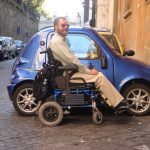



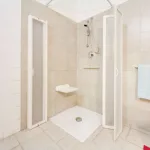

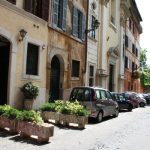
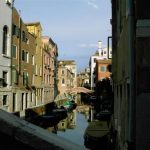

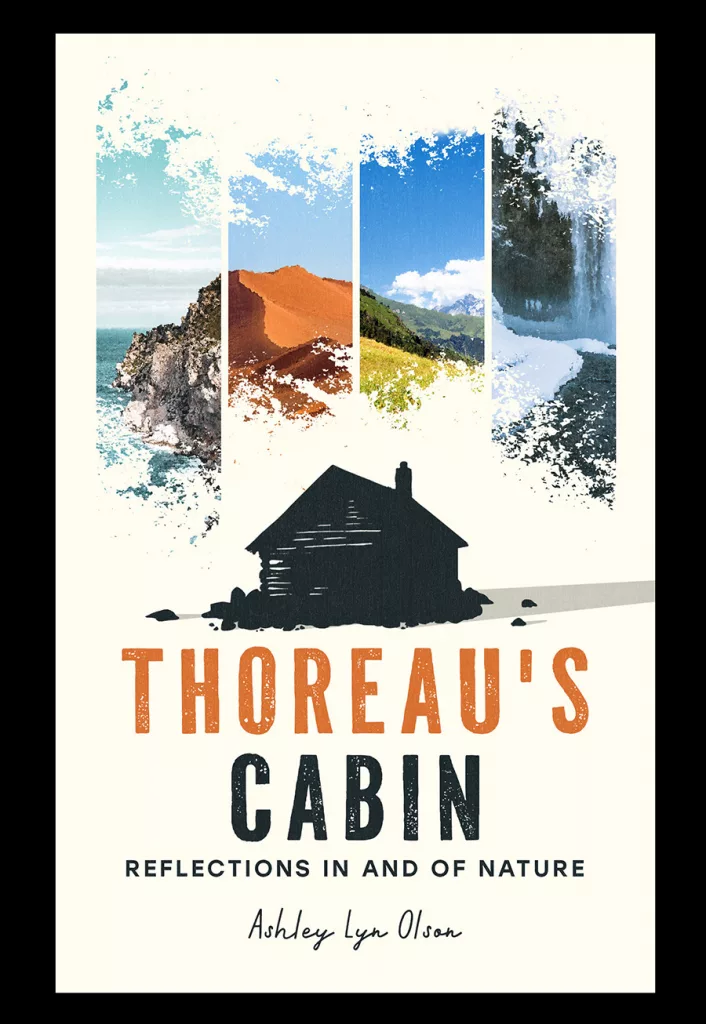

Excellent article! Loads of useful information. Thanks very much :)
Excellent article. I truly appreciate the information because booking a tour is costly as wheelchair accessible tours are more expensive. We will be there in August and have a day and a half before our cruise.